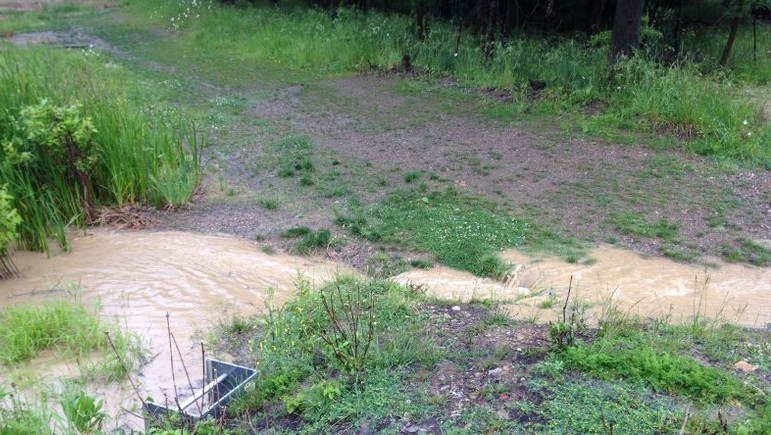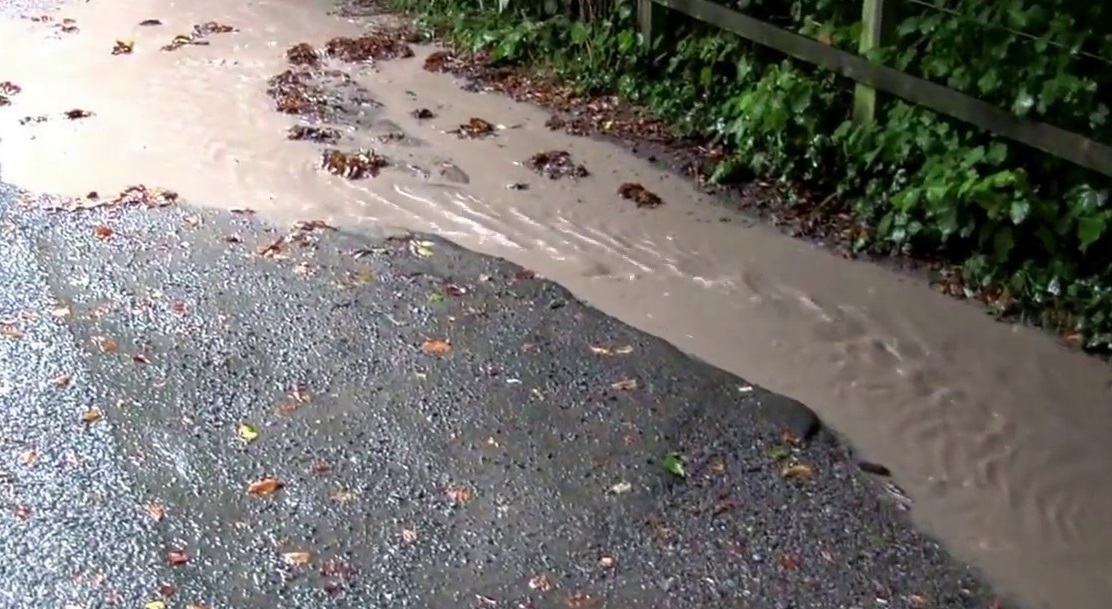Homes At The Bottom Of A Hill: How We Re-route Water Away

Spring runoff is a frustrating yet always reliable presence for a home located at the base of a slope. It’s not just the surface water you should be concerned with, though that can bring a lot of unwanted soil and plant matter, too; the subsurface water, that moisture flowing beneath the ground, can wreak havoc on your foundation and basement.
Living at the bottom of a hill you have no control over doesn’t mean you have to suffer through these water problems. There are several options you have to reroute both surface and subsurface runoff from your foundation!
Taking Care of Spring Runoff
 Rerouting the water will sometimes require intervention in the backyard before we dig down into the foundation. The Ashworth team can put diversionary solutions for surface and subsurface runoff in your yard to direct the flow of water before it ever even reaches your home.
Rerouting the water will sometimes require intervention in the backyard before we dig down into the foundation. The Ashworth team can put diversionary solutions for surface and subsurface runoff in your yard to direct the flow of water before it ever even reaches your home.
Grading your yard is one such solution. Many drainage issues are the result of yards that weren’t properly graded during construction. To solve this, we would have to alter the landscape to encourage water flow away from the foundation, rather than towards it. When you’re at the bottom of a hill, though, grading can be a costly (or altogether impractical) solution.
In situations like this, we can create a small hill on your lawn called a berm. This entrenched landscape feature is a rounded mound of soil, but it creates a natural-looking barrier that allows water to flow around it. When placed strategically, the berm will keep surface runoff from pooling around your foundation. Covered in plants and grass, you’d never know it was doing an important job for you!
If the area is paved or full of concrete, a trench drain is the best solution. These channels are lined with concrete and covered in a protective grate, and they’ll direct water flow away from your foundation while filtering out debris to prevent any clogs and potential flooding.
Of course, it all depends on your individual situation. If the hill is part of your property, you can do a lot more diversionary work than if your home is at the bottom of someone else’s hill.
Keeping Subsurface Runoff Away From Your Foundation
It’s the water you don’t see that can create the most expensive issues. Subsurface water won’t be obvious until it finds a weak spot, but by then it might be too late. Having secure protection right at the foundation level can be the best measure, and you’ll want a system that prevents flooding and water drawn to your foundation by gravity to even touch the concrete, and drains the water away. A round stone barrier with a weeping tile system beneath can do all that, creating impenetrable protection that doesn’t require emergency maintenance.
secure protection right at the foundation level can be the best measure, and you’ll want a system that prevents flooding and water drawn to your foundation by gravity to even touch the concrete, and drains the water away. A round stone barrier with a weeping tile system beneath can do all that, creating impenetrable protection that doesn’t require emergency maintenance.
Preventing a Flooding Catastrophe
We start by excavating around the foundation, then laying down a load of 1” round stone to act as a barrier between the basement and the soil. This porous barrier doesn’t give the moisture a solid footing in which it can leach, allowing water to drain below instead of holding it at the foundation walls. The moisture falls into a weeping tile system at the base of the foundation, and this is connected to your home’s sump pump or a storm sewer.
Re-routing water away can be done with landscape features, a properly-placed drain at the foundation, or both. No matter what the situation, when you’re at the bottom of a hill, you have to take action to detour that moisture away! Contact us if you have more questions.
